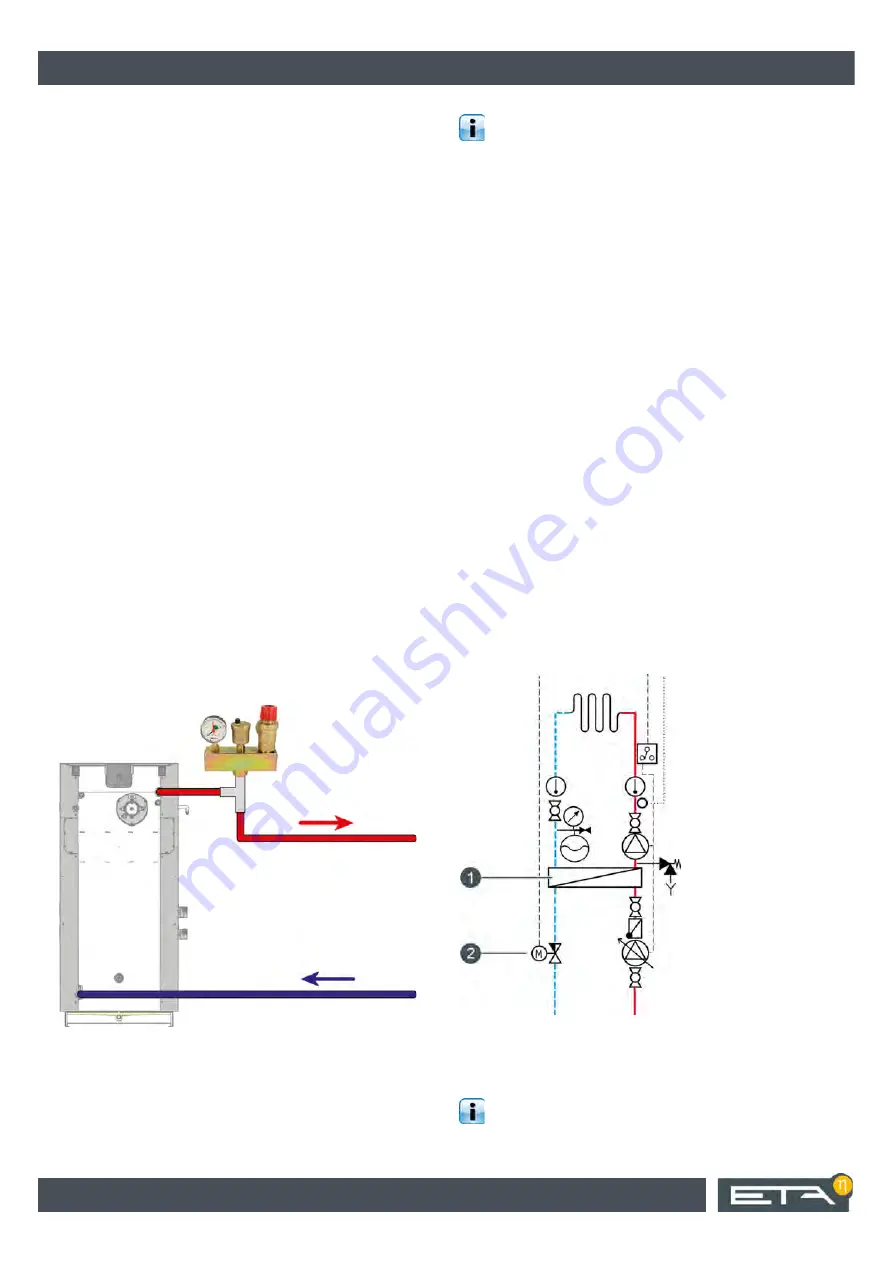
32
www.eta.co.at
Bleeding
Information for installation
Lime stabilisation can be dangerous
The addition of lime stabilising agents prevents
limescale. However, we advise against doing this.
These agents increase the salt content and result in an
undefined pH value. If the system is filled with large
amounts of water, exactly the same agent must be
used again. Mixing with other water additives or with
antifreeze can result in corrosion.
7.4
Bleeding
Protection against atmospheric corrosion
To reliably protect the entire heating system against
corrosion, air intrusion should be kept to a minimum
and any air that does gain entry must be released as
soon as possible.
Bleeding at highest point in flow
No system is completely airtight. Air that gets into the
system is transported to the boiler with the return flow
since water can take up more air as it gets colder and
as the pressure increases. The air is released again at
the point in the system with the highest temperature
and the lowest pressure. The two typical points for
releasing gas are the hot boiler and the highest point in
the heating system flow.
Install a bleed valve at the upper end of the pipe from
the boiler outlet (already installed in PelletsUnit and
PelletsCompact boilers) and also at the highest point in
the flow of the entire system.
Fig. 7-7: correct positioning of the bleed valve
The T-piece of the bleed valve must be the same
size as the boiler's flow connection, so that no air
pocket may form. Likewise, the boiler body must be
oriented horizontally, or ascending slightly toward the
flow connection, so that air can escape.
For large, unseparated underfloor heating systems, an
absorption filter for the entire water flow should be
installed in the flow after the boiler (Spirovent, Flamco
and Pneumatex are typical manufacturers).
Impermeable plastic tubing or system separation
Plastic tubing which is used must have DIN 4726 cer-
tification. As a rule, this is documented with a DIN test
mark and a register number in the pipe label.
Underfloor heating systems from older construction
years often do not meet the requirements of the DIN
standard from 1988. A considerable input of oxygen is
to be expected here. The oxygen introduced can have
a corrosion-promoting effect on various components in
the heating system. A separation of the existing
underfloor heating from the new boiler is required here.
Although the limit values are not reached, the sum of
the oxygen input via surface heating system, distribu-
tion, leakages, replenishment, etc. can also cause
corrosion damage, especially in large systems (pipe
lengths over 5000 running metres). A separation of the
surface heating system from the heating boiler is
recommended here. If damage to the boiler caused by
the introduction of oxygen is proven, all claims under
warranty and guarantee are void.
Fig. 7-8: System separation
1
Heat exchanger
2
Control valve
The hydraulically correct incorporation of the heat
transfer station (regardless of whether for system
separation or as a transfer station) must be adjusted
















































